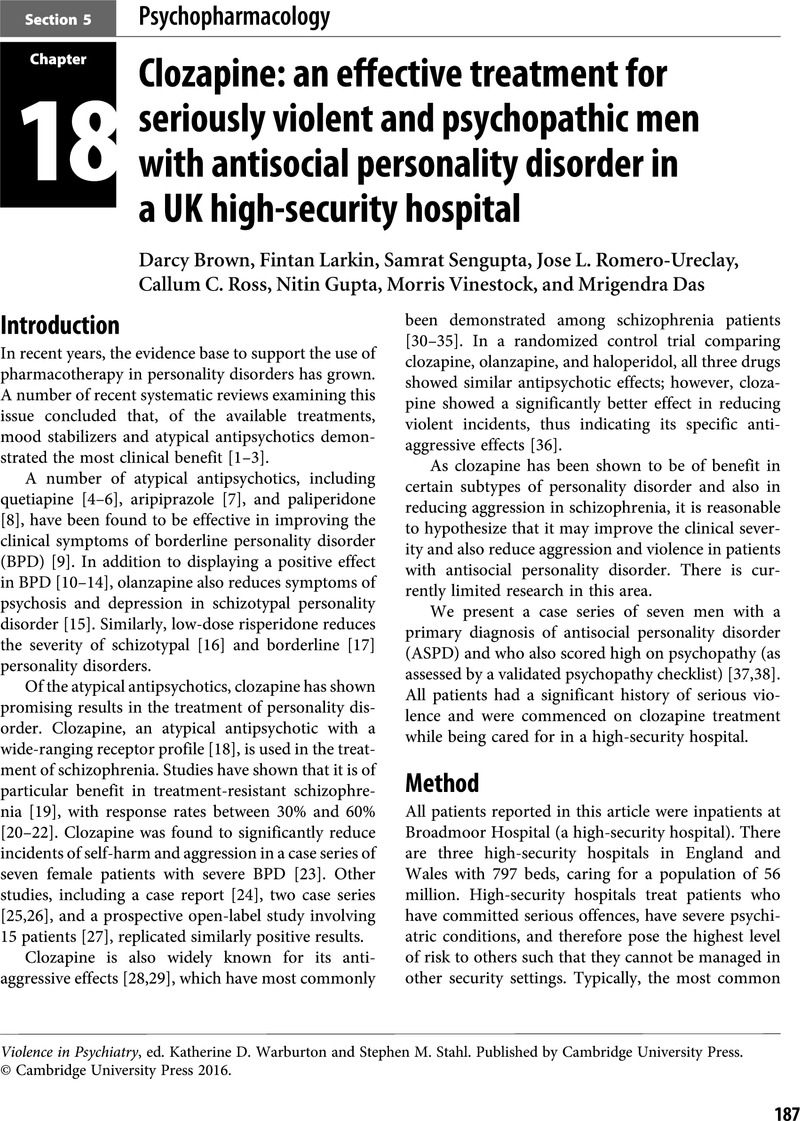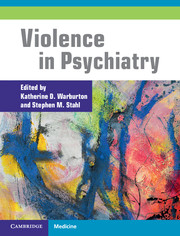Book contents
- Violence in Psychiatry
- Violence in Psychiatry
- Copyright page
- Contents
- Contributors
- Section 1 Statement of the problem
- Section 2 Assessment
- Section 3 Neurobiology
- Section 4 Guidelines
- Section 5 Psychopharmacology
- Chapter 17 Effectiveness of antipsychotic drugs against hostility in patients with schizophrenia in the Clinical Antipsychotic Trials of Intervention Effectiveness (CATIE) study
- Chapter 18 Clozapine: an effective treatment for seriously violent and psychopathic men with antisocial personality disorder in a UK high-security hospital
- Chapter 19 Augmentation of clozapine with amisulpride: an effective therapeutic strategy for violent treatment-resistant schizophrenia patients in a UK high-security hospital
- Chapter 20 The psychopharmacology of violence: making sensible decisions
- Chapter 21 Treating the violent patient with psychosis or impulsivity utilizing antipsychotic polypharmacy and high-dose monotherapy
- Chapter 22 A rational approach to employing high plasma levels of antipsychotics for violence associated with schizophrenia: case vignettes
- Chapter 23 Illustrative cases to support the Cal-VAT guidelines
- Section 6 Treatment interventions
- Index
- References
Chapter 18 - Clozapine: an effective treatment for seriously violent and psychopathic men with antisocial personality disorder in a UK high-security hospital
from Section 5 - Psychopharmacology
Published online by Cambridge University Press: 19 October 2021
- Violence in Psychiatry
- Violence in Psychiatry
- Copyright page
- Contents
- Contributors
- Section 1 Statement of the problem
- Section 2 Assessment
- Section 3 Neurobiology
- Section 4 Guidelines
- Section 5 Psychopharmacology
- Chapter 17 Effectiveness of antipsychotic drugs against hostility in patients with schizophrenia in the Clinical Antipsychotic Trials of Intervention Effectiveness (CATIE) study
- Chapter 18 Clozapine: an effective treatment for seriously violent and psychopathic men with antisocial personality disorder in a UK high-security hospital
- Chapter 19 Augmentation of clozapine with amisulpride: an effective therapeutic strategy for violent treatment-resistant schizophrenia patients in a UK high-security hospital
- Chapter 20 The psychopharmacology of violence: making sensible decisions
- Chapter 21 Treating the violent patient with psychosis or impulsivity utilizing antipsychotic polypharmacy and high-dose monotherapy
- Chapter 22 A rational approach to employing high plasma levels of antipsychotics for violence associated with schizophrenia: case vignettes
- Chapter 23 Illustrative cases to support the Cal-VAT guidelines
- Section 6 Treatment interventions
- Index
- References
Summary

- Type
- Chapter
- Information
- Violence in Psychiatry , pp. 187 - 201Publisher: Cambridge University PressPrint publication year: 2016



